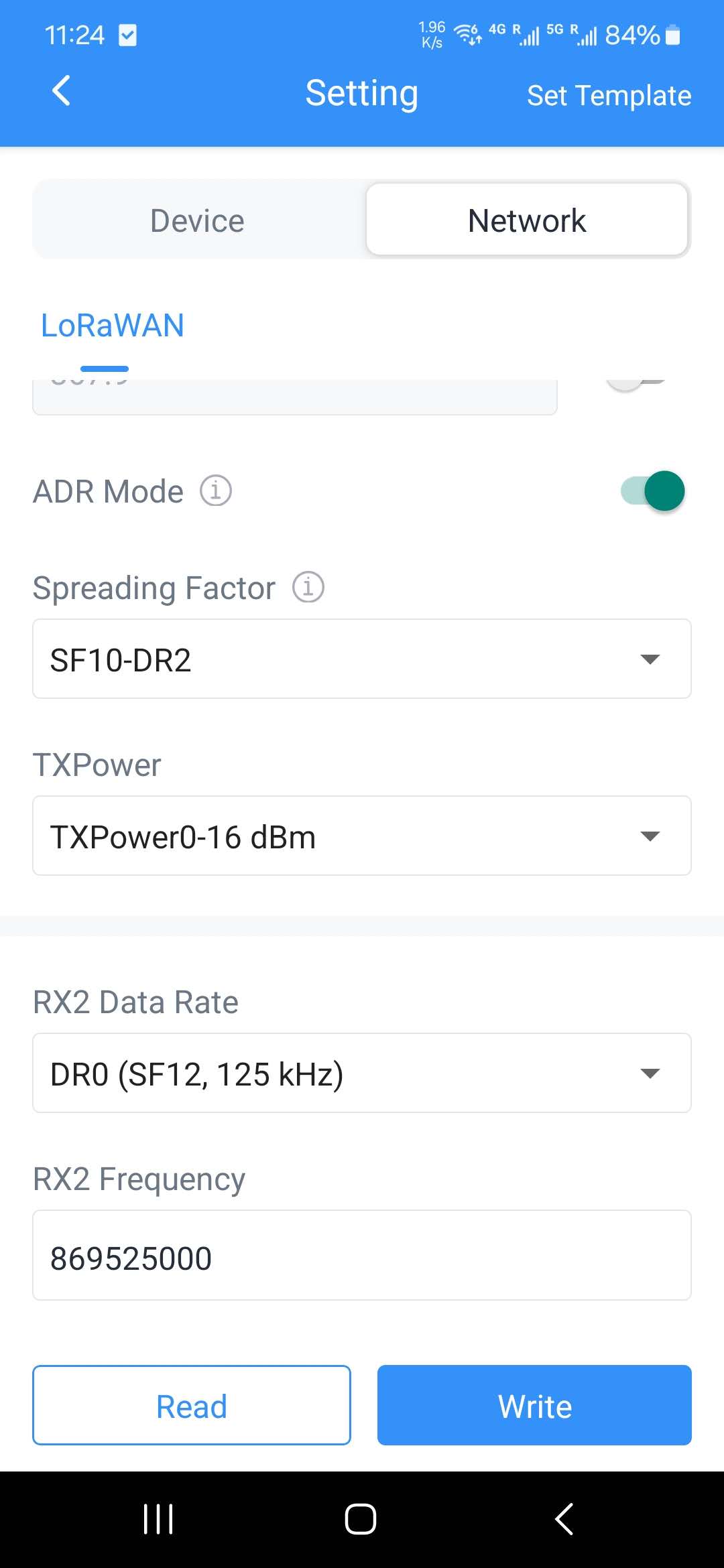1-LoRaWAN End Device-Milesight AM307
Device
Milesight AM307 LoRaWAN Indoor Air Quality Sensor (7 in 1)
This smart IoT device is designed for comprehensive indoor air quality monitoring, providing real-time environmental data for offices, buildings, and indoor spaces.
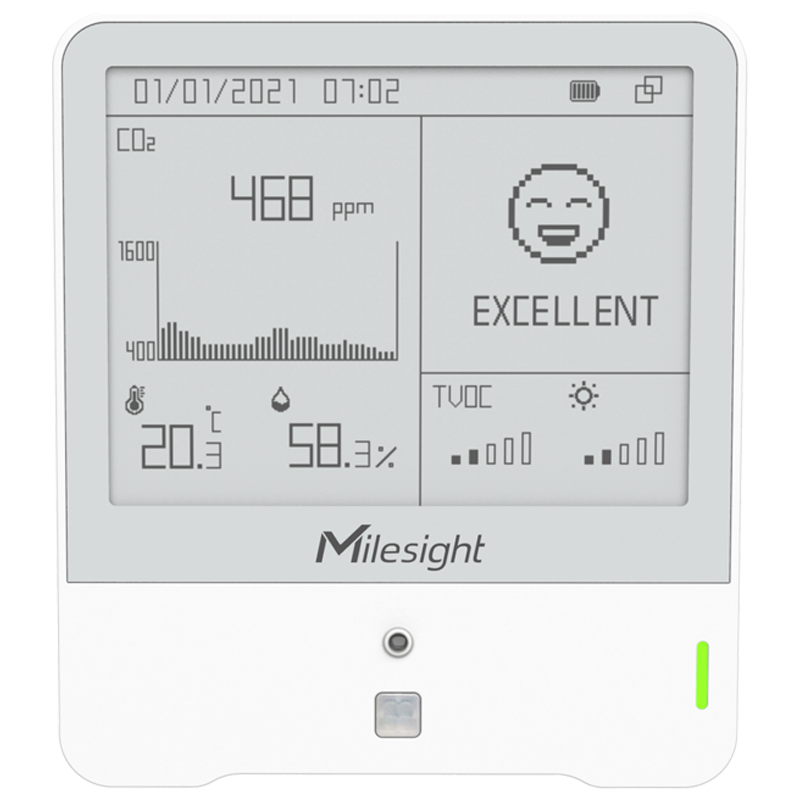
1. Core Functions
- Environmental Monitoring
{
"battery": 49,
"co2": 662,
"humidity": 41.5,
"light_level": 1,
"pir": "trigger",
"pressure": 976.9,
"temperature": 17.6,
"tvoc": 157
}
2. Device Configuration
-
General Settings
- Temperature Unit (°C/°F)
- Reporting Interval (customizable from 1 min to 24 hours)
- LED Indicator (status display)
- Display Mode
- Time Zone Settings
-
Sensor Parameters
- Temperature
- Range: -20°C to 60°C
- Accuracy: ±0.3°C
- Resolution: 0.1°C
- Humidity
- Range: 0-100% RH
- Accuracy: ±2% RH
- Resolution: 0.1% RH
- CO2
- Range: 0-5000 ppm
- Accuracy: ±30 ppm
- Auto-calibration option
- TVOC (Total Volatile Organic Compounds)
- Range: 0-60 ppm
- Real-time monitoring
- Air quality index calculation
- Temperature
-
Calibration Options
- Manual zero calibration
- Automatic baseline correction
- Temperature offset adjustment
- Humidity compensation
-
Threshold Settings
- Temperature alerts (high/low)
- CO2 warning levels (ppm)
- Humidity thresholds
- TVOC alert levels
- Customizable alert notifications
LoRaWAN/IoT Device
This is a LoRaWAN/IoT device.
1. LoRaWAN Protocol
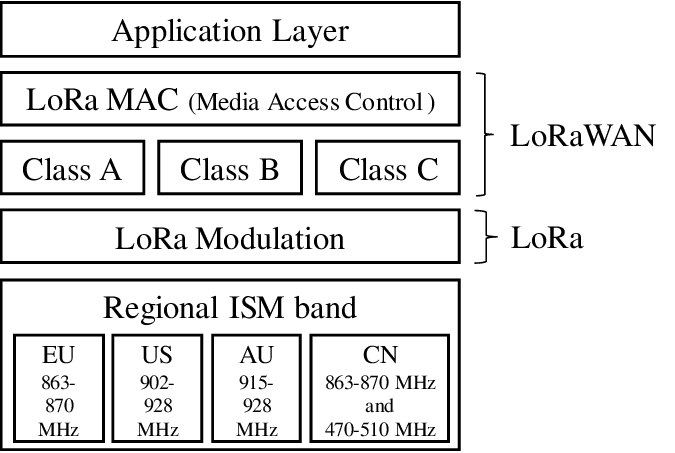
┌─────────────────┐
│ Application │ Layer 3: Application Layer
├─────────────────┤
│ LoRaWAN │ Layer 2: MAC Layer (Data Link)
├─────────────────┤
│ LoRa │ Layer 1: Physical Layer
└─────────────────┘
- Physical Layer (Milesight AM307)
- Handles radio modulation
- Manages RF parameters: Frequency, Spreading Factor (SF), Bandwidth, and Transmission Power
- MAC Layer (Device EUI, APPEUI, Application Port, Application Key)
- Manages network access
- Device activation (OTAA/ABP)
- Handles: Message formatting, Security, Channel access, Adaptive Data Rate (ADR)
- Application Layer (TTS)
- Carries the actual payload
- Handles end-application data
- Manages application-specific encoding/decoding
2. Network configuration
-
Device EUI
- A globally unique 64-bit identifier for each device
- Similar to a MAC address for LoRaWAN devices
- Format: 8-byte hexadecimal number (e.g., 70B3D57ED0008C3D)
- Used for device identification and authentication
-
APP EUI (JoinEUI)
-
Globally unique identifier for the application/joining server
-
Used during the device activation process
-
64-bit identifier that helps route messages to the correct application
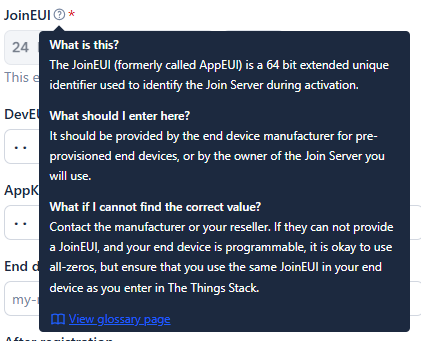
-
-
Application Port
- Used to multiplex different data types/applications on the same device
- Values range from 1 to 223
- Helps distinguish between different types of payloads
-
LoRaWan Versiom
- Specifies the protocol version (e.g., 1.0.2, 1.0.3, 1.1)
- Determines available features and security mechanisms
-
Work Mode
-
Defines how the device operates (e.g., Class A, B, or C)
-
Class A: Most energy efficient, bidirectional communication. This device is class A device.
-
Class B: Scheduled receive windows
-
Class C: Continuously listening
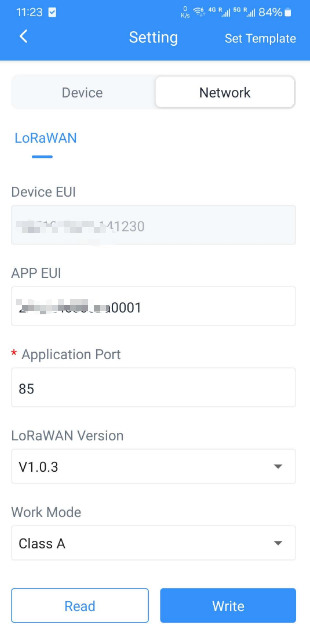
-
-
Join Type
- OTAA (Over-the-Air Activation): Dynamic secure activation
- ABP (Activation By Personalization): Static activation with pre-programmed keys
-
Application Key
-
128-bit AES key used for secure device activation in OTAA(Over-The-Air Activation)
-
Root key for deriving session keys
-
You can generate from the TTS and copy paste here
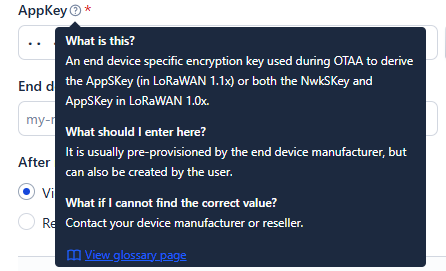
-
-
Rejoin Node
- Configuration for periodic rejoin requests
- Helps maintain network security and connection reliability
-
Set the number of detection signals sent
-
Defines how many times the device attempts to send join requests
-
Affects connection reliability and power consumption
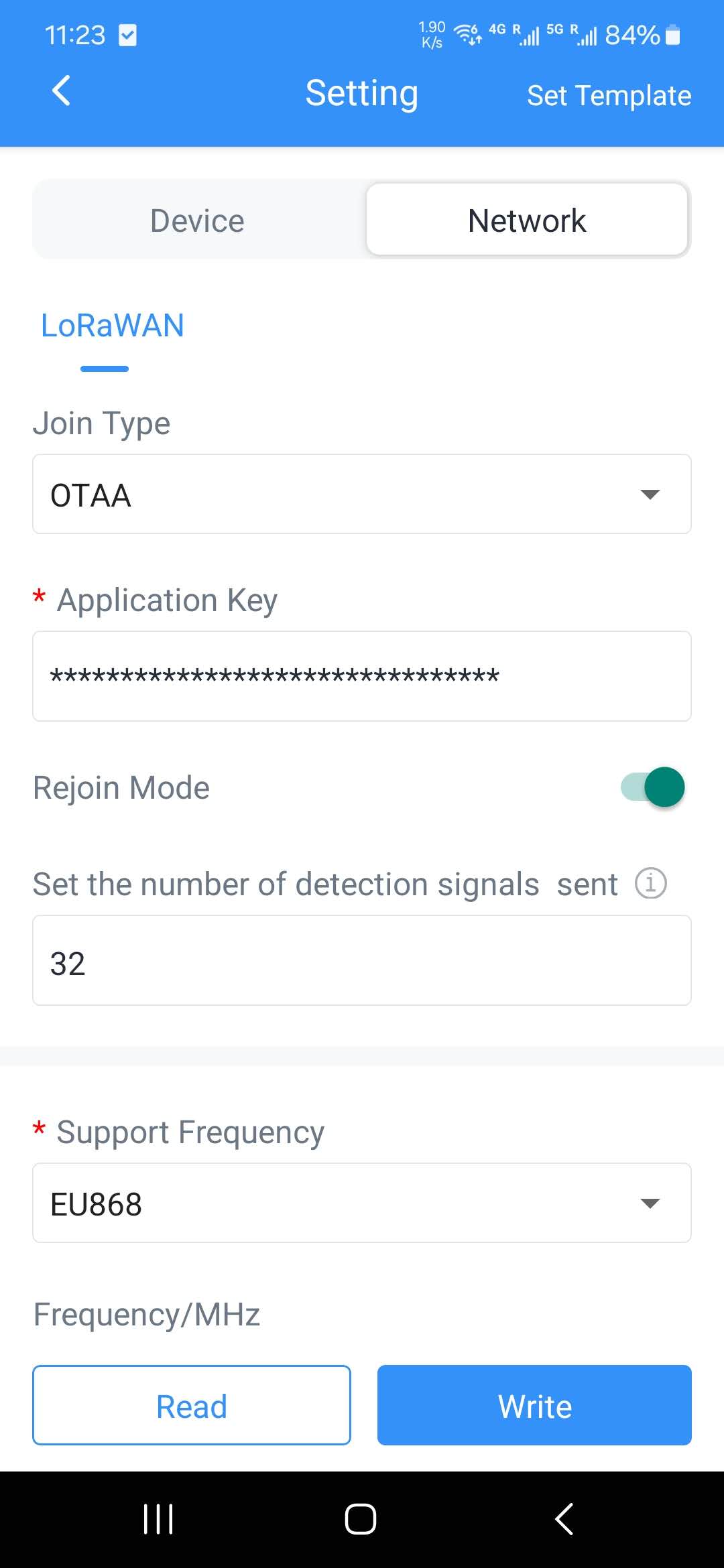
-
-
Support Frequency
- Frequency band used for communication (e.g., EU868, US915, AS923)
- Region-specific and must comply with local regulations
-
Frequency/MHz
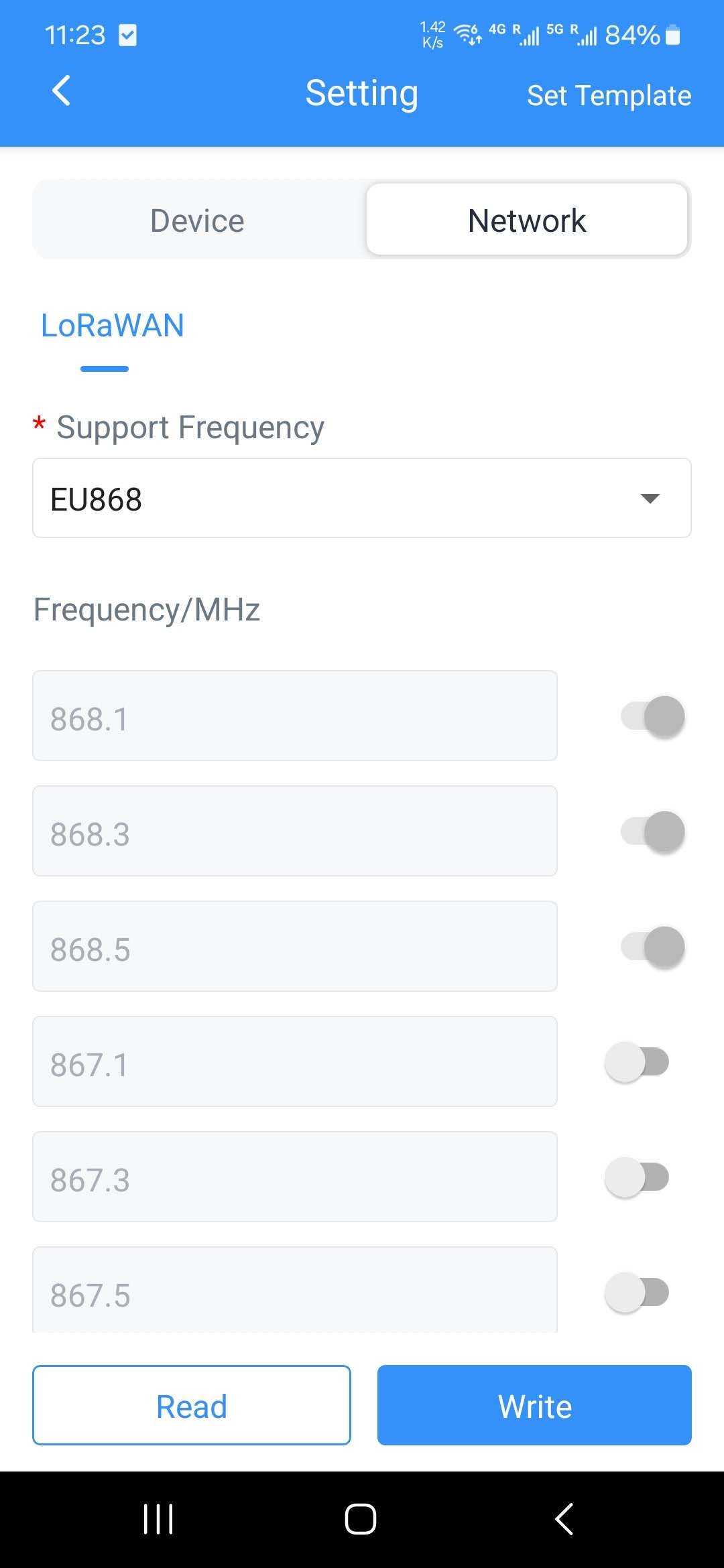
-
ADR Mode
- Automatically optimizes data rates and power usage
- Balances range, airtime, and power consumption
-
Spreading Factor
- Determines the chirp duration (SF7-SF12)
- Higher SF = longer range but slower data rate
- Lower SF = shorter range but faster data rate
-
TXPower
- Transmission power level in dBm
- Affects communication range and battery life
- Must comply with regional regulations
-
RX2 Data Rate
- Data rate for the second receive window
- Used when the first receive window fails
- Region-specific parameter
-
RX2 Frequency
- Frequency used for the second receive window
- Fixed frequency per region
- Backup communication channel
